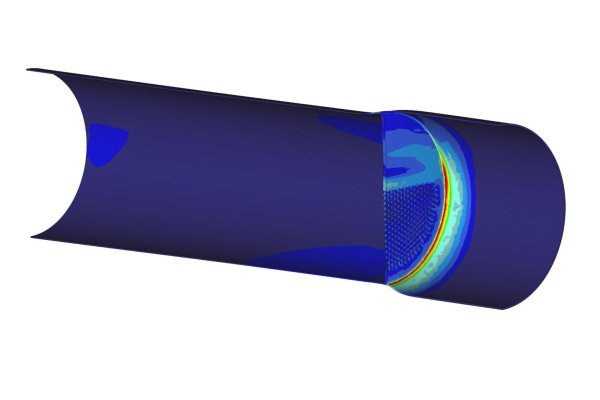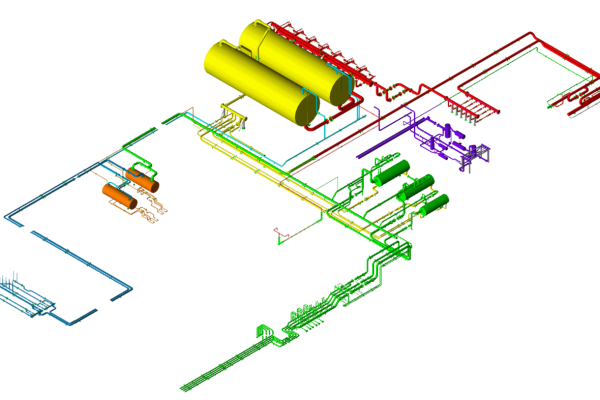Introduction
During the start-up and normal operation phases of a Gasoil Hydrofiner system, significant vibrations were observed in its piping. These vibrations, described as “large amplitude,” were particularly concerning. The unit’s piping was divided across four separate pipelines.
Analysis
Upon examining the system under various process conditions, it was determined that two-phase flow occurred consistently. The vibrations were most pronounced during the start-up phase, exhibiting the largest dynamic displacements. A detailed flow regime analysis identified slug flow as the likely cause. Slug flow, characterized by liquid masses being pushed by gas pockets, is especially hazardous from a mechanical perspective. Therefore, the focus of the analysis was on the start-up phase.
Dynamic pipe stress models were created and analyzed using both the spectrum and time history methods. These models incorporated a series of consecutive slug loads on all elbows of the four pipelines. The slug loads were applied as time-dependent inputs for the time history method and as modal input spectra for the shock response spectrum analysis. The primary goal of these simulations was to replicate the observed vibrations and determine the corresponding dynamic stresses.
The pipe stress analysis was conducted using the CAESAR II software. The analysis aimed to “eliminate or shift up the most problematic mode shapes” using the shock response spectrum method.
Results
To mitigate the displacements and dynamic stresses, several modifications were proposed. These modifications focused on eliminating or shifting the most problematic mode shapes identified through the shock response spectrum method. One recurring issue was the large guide gaps (clearances), which did not close properly due to insufficient thermal expansion. Additionally, the piping showed significant flexibility, especially in the shorter sections near the furnace. This flexibility made these sections particularly vulnerable to the vibrational effects of slug impact.
By addressing these issues, the proposed changes aimed to reduce the risk of large amplitude vibrations, thereby enhancing the overall stability and safety of the Gasoil Hydrofiner system.







